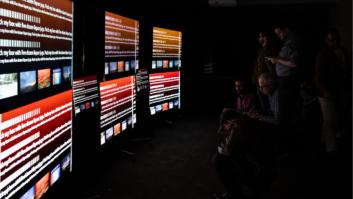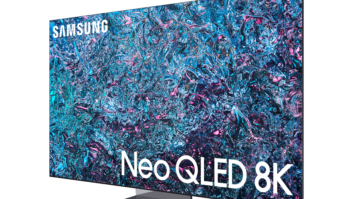
How many TV channels do you watch? More importantly, how many TV channels do your customers watch? I bet 80 percent of our clients watch no more than 10 channels (I came up with Starz, HBO, Showtime, AMC, USA, Fox News, NBC, and Bravo). Apple’s betting the answer is “about the same as the number of apps on your smartphone or tablet.”
The much anticipated and hyped Apple streaming TV service launched Wednesday with a whimper (an intentional whimper). I’m surprised the media didn’t do a better job of covering this. I guess they were waiting for a collaboration with the cable providers. Meanwhile, Apple ran the ball around Big Cable and no one noticed. Downplaying the significance of the new Apple TV App Store (on a new platform called tvOS) is classic Apple. The initial volley paving the way for last week’s announcement came earlier this year in the form of the HBO NOW launch. Apple and HBO banished the relationship triangulation that made perfect sense to the cable companies but confused and annoyed the rest of us. Previously, if you wanted to watch HBO (or most other networks), you had to sign in with your cable provider’s credentials first. HBO NOW ended all that by launching a direct-to-consumer service, cutting out the cable provider. To justify this move to the cable companies, they famously did nothing to prevent their customers from sharing HBO GO (HBO’s complementary streaming app for traditional cable subscribers) credentials with anyone capable of fogging a mirror. HBO then used the perceived piracy violations as justification for launching HBO NOW (after soft-launching in Europe). As HBO is the big dog of the cable world, this signaled to every other network and content creator that it’s now OK to “disintermediate” the cable providers. Biting the hand that feeds just became OK. Earlier this summer, ESPN and Bravo (among others) followed suit (which rocks because lack of Bravo via app streaming kept my wife from greenlighting my cord cutting mission—laissez les bon temps rouler!)
Remember the first iPhone? Things only took off for iOS when Apple debuted the iOS App Store (rumor has it Apple vehemently opposed the idea of an App Store initially). In five short years, there are thousands of apps that do pretty much everything. The tvOS App Store will contain a similar count of apps in short order. The big difference for our industry is that they’ll focus in four main areas; video streaming, shopping, home control, and gaming. First up: video streaming.
Now that the content creators and networks have been released from the oppressive yoke of the cable providers, you can be sure that everyone from The Tennis Channel to your local CBS affiliate will be coming out with their own apps (and accompanying micro-subscription plans—think $1 per month for Comedy Central). Content creators selling directly to consumers will become the new normal and Xfinity, FiOS, and their ilk will be nothing but glorified pipe providers (just like any other utility). This demotion of the cable providers will be especially driven home by the superior user experience offered by Apple.
Last week’s announcement promised global search via Siri to a short list of connected services. That list is sure to grow with the addition of new apps to the tvOS app store. The pressure will be tremendous on content creators to not be left out of the Siri global searching (think about how much money you spend on Google AdWords trying to outperform your competitors). Ultimately, the on-screen guide that our cable providers give us will be supplanted by the new Apple TV “guide” (a curated short-list of recommendations, maybe a live TV window and Siri at the ready?). Imagine the personalization when user profiles are unveiled. “Who’s watching?” will become the question asked by Apple TV when you power on (Netflix already does this). Apple has data about what you like based on iTunes habits since 2003, so it won’t take much to get this curation process going along smoothly. If you consider your own tvOS app selection will build a personalized Pandora-esque profile without too much effort, it’s mind boggling to ponder the personalization possibilities when Apple begins analyzing viewing behaviors. Everyone with an Apple TV is now a Nielsen family in Apple’s eyes.
I can see the writing on the wall already based on the compelling yet clunky experiences my family has with our Amazon Fire TV and Amazon Echo (neither of which we sell, but great existing examples of voice searching). Fire TV has global voice search of a few services. The searching is OK, but the lack of true global search means the Fire TV is nothing more than an Apple TV capable of playing Amazon Prime Video (sidebar: it will be interesting to see how Amazon plays the tvOS hand). Amazon Echo on the other hand is a piece of awesome. I picture devices like these (small, self-contained cylinders bristling with sensors and always listening) being omnipresent in our homes down the road. I’m not sure how many of you sold the Home Automated Living (HAL) product in the early 2000s (it didn’t work very well), but the premise is the same. An attention word (ours answers to “Alexa”) opens up the ability to get anything from music to news updates. One could argue it’s no different than the “Hey Siri” feature on Apple devices. Alexa is, however, stunning in her simplicity and a dedicated appliance.
Last week, I came home and my kids were dancing around the kitchen, singing, “Now watch me whip, watch me nae nae…” Good luck getting that one out of your brain. What struck me beyond the odd gyrations of my brood was the audio emanating not from my really nice architectural audio system, but from the Amazon Echo. The sound quality was horrible. I broke out into hives. How could this be? All they had to do was walk over to the wall and tap one of the Control4 buttons on the keypad or take out a smartphone/tablet and type in what they wanted and it would’ve been fine. Turns out my three kids and 30-something year-old wife all prefer Alexa. They’ll take “easy” over “quality” any day of the week (I guess we could conference in the Kaleidescape folks for this one to share sob stories).
Everything follows the path of least resistance, and we pledge to sell the simplest solutions to our customers (if Alexa works well now and Siri is already fairly decent, it’s an easy bet that the new Apple TV will be a hit). Is tvOS the simplest right now? Heck no. Can you actually watch TV with Apple TV now? Not yet. I give it less than two years, though. Will it be the winning horse beating out Google TV, Fire TV, Roku, Popcorn Time, Plex, Boxee, and whatever snarky obscure streamer you can conjure up? You bet it will. Remember that up until now, Apple described the Apple TV as a hobby. We haven’t even started talking about HomeKit. That will have to wait for another day. It looks like our plan at Livewire is to ditch the stick remote shipping with the Apple TV and encourage our customers to use their iOS devices to leverage the Siri functionality (keeps us from having to tangle with Bluetooth nightmares). We’ll see how it goes.
Stay frosty and see you in the field.







